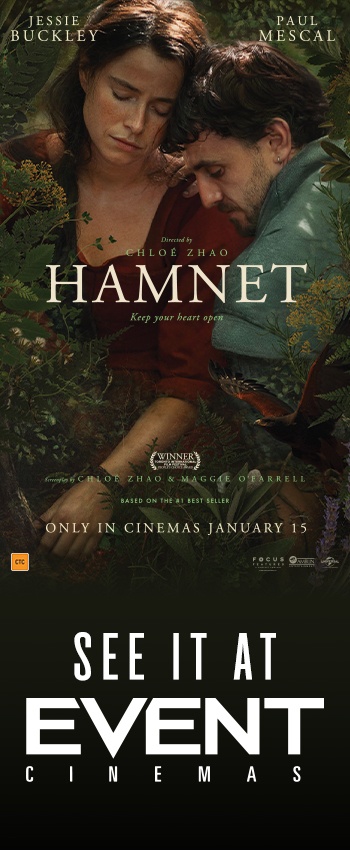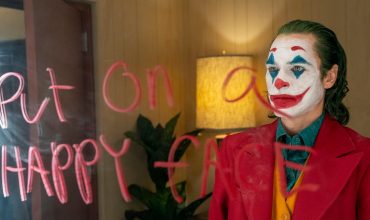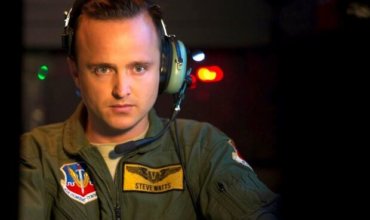Ivan Sen’s BENEATH CLOUDS (2002) marked him as a talent to watch. His next films DREAMLAND (2009) and TOOMELAH (2011) confirmed his status as an artist and craftsman. His new feature MYSTERY ROAD is Sen’s first step towards genre movies. He has tackled a mystery, added a dash of Western and given the whole thing his own spin.
Aaron Pedersen plays Jay Swan a police detective who has just returned to his home after some years in the city. His first case back is to find out who murdered a teenage Aboriginal girl and left her body by the highway, near the Massacre Creek bridge. It seems Swan is given the case because he is the only Aboriginal policeman in the town and the white cops have no real interest in finding the killer.
There are a number of potential suspects, but productive leads are harder to come by. Swan discovers more than one girl has been making money having sex with the long haul truckies who pass through the town. The girls are underage, but does it have anything to do with the murder? Maybe it’s just one of the many crimes that the town’s senior policemen are happy to ignore. Swan is a good cop and he’s a purist. Turning a blind eye is not in his nature.
He is a lonely figure, detached from both the black and white communities. Swan has an uneasy relationship with his ex-wife (Tasma Walton) and his daughter (Tricia Whitton). His colleagues are actively suspicious of this man who won’t drink with them or go for a feed at the local Chinese. The only support Swan has is from the local coroner (Bruce Spence) and an uncle he calls Old Boy (Jack Charles). Swan the loner is a modern analogue of Gary Cooper’s Sheriff Will Kane in HIGH NOON (1952).
Sen cites the Coen brothers’ NO COUNTRY FOR OLD MEN (2007) as the Western that most influenced his film. The film is layered with other influences. It consciously references the culturally loaded concept of the black tracker in the creation of Swan’s character. He has the power of his skills, and nominally the power of the badge but no one in his community has respect for either. As one of the local Indigenous kids is pleased to tell him, “We shoot cops, bro’”
Pedersen is strong as Swan. He has gained gravitas over his many years on our screens. Hugo Weaving, Jack Thompson and Tony Barry are part of a familiar Australian cast that includes Zoë Carides, David Field and Roy Billing. Walton’s performance is a standout as is Damian Walshe-Howling’s playing a wily local criminal. Ryan Kwanten is very good as a hostile roo shooter. I would have liked to see more of Jack Charles whose warmth is sorely needed in this tale of fragmented families and broken relationships. (Sidebar: Charles is a veteran Aboriginal actor whose amazing life is the subject of Amiel Courtin-Wilson’s 2008 documentary BASTARDY).
The weakness in MYSTERY ROAD is in the mystery itself. There are certain story expectations that come with this genre and it’s a bold move to depart from them. A mystery needs to answer the questions it poses and there are several loose ends left after the movie’s big climax. I would argue that MYSTERY ROAD is in reality a blend of arthouse and genre.
Sen’s personal connection with his subject matter is evident in every frame. The town in the film is meant to suggest Moree where he grew up (the film was shot in Winton, Queensland). The filmmaker has much to say about the meeting of indigenous and white Australia in a small town setting. Two girls in his wider family were murdered and these cases remain unsolved. There is a power in the images that Sen captures (he shot, edited, wrote, composed the music as well as directing). He evokes sadness with his beautifully shot pictures of this dusty landscape.
The reason to see MYSTERY ROAD is to take a journey into the shattered world of Jay Swan. He is doing everything he can to hold his life together. His need to get to the truth is what drives him forward when no one else gives a damn.
MYSTERY ROAD is currently in limited release around Australia. It runs for 121 minutes. I rated it 6/10.




